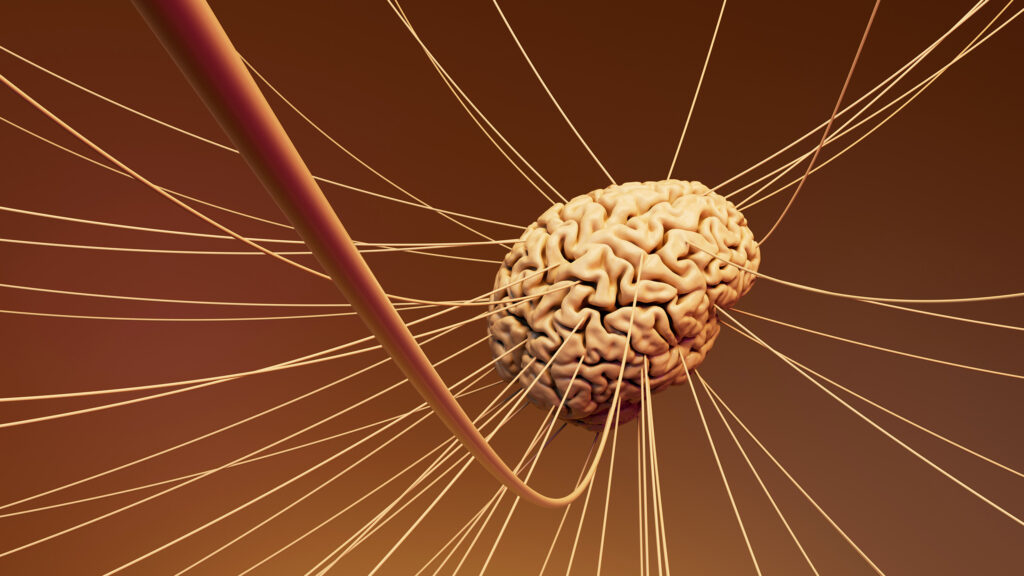Oxytocin, popularly known as the love hormone, cuddle hormone and attachment hormone, is what we release when we express affection for another person through touch, hugs, kisses or sex.
The more oxytocin we release, the stronger and more lasting the attachment. This goes beyond human relationships to include the bond we share with our animals. Every time you pet or lovingly gaze into your dog’s eyes, your oxytocin levels shoot up. Animals pick up on the outward signs of this change and this deepens your bond with them.
Oxytocin is also closely related to serotonin and dopamine, and together they form the ‘happy hormones’ club, each in charge of a different aspect of happiness and pleasure. And when they work together, they can temporarily turn your life into a Danielle Steel novel.
Forty-seven years after oxytocin, a nine amino acid CNS neuropeptide was discovered, it became the first-ever polypeptide hormone to be isolated and synthesized.

Highlights
- Most physical expressions of love and affection, such as hugging, kissing, touching and sexual intimacy, trigger the production of oxytocin and facilitate bonding between adults, which is why it has so many love-centric nicknames,
- Studies have found low post-meal blood glucose levels as a result of oxytocin, in people with obesity.
- Oxytocin could help in the treatment of alcohol addiction,
- Research suggests that oxytocin inhibits the brain’s fear centre.
6 Interesting Facts About Oxytocin – the Love Hormone
1.Oxytocin is a relationship enhancer
Most physical expressions of love and affection, such as hugging, kissing, touching and sexual intimacy, trigger the production of oxytocin and facilitate bonding between adults, which is why it has so many love-centric nicknames. However, the role of oxytocin as a relationship enhancer goes much deeper.
The more someone triggers the release of oxytocin in us, the more attached we become to that person. There is also an established link between oxytocin and fidelity in heterosexual relationships due to the hormone’s ability to cause males to view their partners as more attractive than other familiar or unfamiliar females.
According to a 2012 study, oxytocin causes males to maintain greater social distance with attractive female strangers.
2.Listening to music can release oxytocin
If you’ve ever wondered about the universal appeal of music and the general consensus that it is a mood-lifter, its connection to oxytocin shouldn’t come as a surprise. Music is also a key ingredient at get-togethers and weddings, fostering social bonding, a feature of oxytocin. While research is still in its early stages, a few studies have found evidence that music can help increase oxytocin levels in the body.
A 2009 study on 20 patients who had had open-heart surgery found that those who listened to music while on bed rest had higher levels of oxytocin. They also reported feeling more relaxed than those who didn’t.
In a 2003 study on 16 singers, oxytocin levels were found to the spike in all participants after a singing lesson, and they reported feeling energized and relaxed.

3.Oxytocin can regulate your blood glucose levels
Scientists studying the effect of oxytocin on health have found a close relationship between the hormone and diabetes and weight. In a study involving mice, oxytocin reversed insulin resistance and improved glucose tolerance in obese mice.
While this was followed by weight loss, the insulin function in the mice had already improved significantly. The researchers also studied a group of non-diabetic people and found that post-meal blood glucose levels went down with oxytocin.
A German study found that oxytocin lowered the levels of cortisol and other stress hormones in male participants. They also ate less and had lower post-meal blood glucose levels. This study was based on previous studies in rats which led to the same conclusions.
4.Oxytocin is released during labour
Oxytocin is released in large amounts in labour, which causes uterine contractions to intensify and open the cervix, allowing the baby to pass through the birth canal. This is probably the most well-understood role of oxytocin, as physicians have been using synthetic oxytocin known as Pitocin to induce labour since the 1900s.
Even after birth, oxytocin keeps the uterine contractions going to discourage haemorrhaging. The hormone is also released when the nipples are stimulated during breastfeeding, facilitating the flow of milk into the nipples.
During skin-to-skin contact, it facilitates newborns and mothers to recognize each other’s special scent. Oxytocin helps the mother and the child bond. It causes a newborn to seek out and latch on to its mother’s breast.

5.Oxytocin can take the edge off your fear
A study conducted by the researchers of the University of Bonn Hospital found that oxytocin inhibits the brain’s fear centre. A series of images were shown to participants to induce fear, 70% of which were also accompanied by a small electric shock to the hand.
Oxytocin was then administered to the participants as a nasal spray, after which they were shown the same images, but without the electric shock.
The study found that those treated with oxytocin showed less activity in the areas of their brains associated with fear, and they were also less afraid of the shock. This suggests oxytocin could be used in the future to treat anxiety disorders.
6.Oxytocin could help treat alcohol addiction
Since alcohol addiction stems from a chronic, relapsing brain disease, a study on rats set out to assess if oxytocin could set right the maladaptive brain changes in alcohol dependence. The experiments found that oxytocin, when administered intranasally or into the brain, inhibited excess drinking in alcohol-dependent rats.
Other studies have also yielded positive results. As Marisa Roberto, a professor of neuroscience, sums it up, ‘Oxytocin has been reported to decrease consumption, withdrawal and drug-seeking behaviour associated with several drugs of abuse, including alcohol, and now we are a step closer to fully understanding why.
Looking ahead we plan to continue to explore oxytocin’s role in addiction with the hope that we can illuminate new and better options to address the disease.’
Conclusion
Oxytocin, popularly known as the ‘love hormone’, is what we release every time we express love and affection through hugging, kissing, touching, sex or even gazing into a loved one’s eyes. The more oxytocin released in a relationship, the more lasting the attachment, whether it is with a person or an animal.
Oxytocin can act as a relationship enhancer for all the aforementioned reasons. Listening to music can help us release oxytocin, which then makes us feel relaxed and energized. Studies in mice and non-diabetic obese people also show that oxytocin plays a role in blood sugar regulation.
Oxytocin’s best-understood role is in labour, where it intensifies uterine contractions to facilitate the opening of the cervix for delivery. This is why synthetic oxytocin, known as Pitocin, has been used by physicians since the 1900s to induce labour.
New studies show that oxytocin inhibits the fear centres in the brain, paving the way for the future treatment of anxiety disorders. Research on the use of oxytocin to address alcohol addiction have also yielded encouraging results.
Disclaimer: The contents of this article are for general information and educational purposes only. It neither provides any medical advice nor intends to substitute professional medical opinion on the treatment, diagnosis, prevention or alleviation of any disease, disorder or disability. Always consult with your doctor or qualified healthcare professional about your health condition and/or concerns and before undertaking a new health care regimen including making any dietary or lifestyle changes.
References







